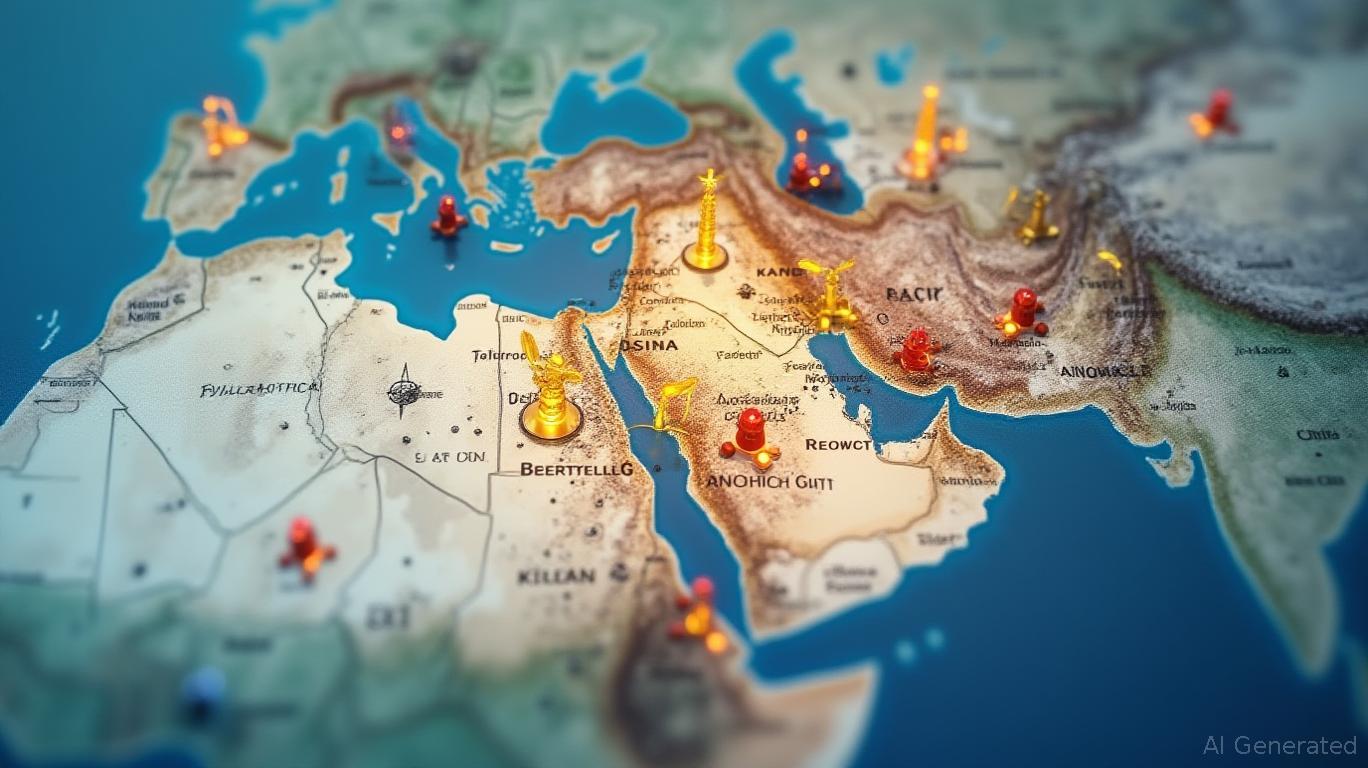The Israel-Iran Truce: A Fragile Pause or a New Dawn for Emerging Markets?
The sudden announcement of a truce between Israel and Iran on June 24, 2025, marked a rare moment of geopolitical de-escalation in a region long defined by conflict. While the ceasefire has temporarily eased tensions, its fragility is underscored by continued skirmishes and unresolved grievances. For investors, the truce's sustainability—and its ripple effects on global risk appetite and currency markets—is a critical question. This article explores how the truce has reshaped financial markets, the vulnerabilities that could upend gains, and why emerging market currencies now present a high-risk, high-reward opportunity.

The Truce's Immediate Impact: A Dollar Sell-Off and Risk-On Rally
The ceasefire's announcement triggered a sharp shift in global risk sentiment. Investors, relieved by the reduced threat of a full-scale war, rotated capital out of safe-haven assets and into riskier bets. The US Dollar (USD), long a beneficiary of its status as a crisis hedge, faced significant pressure.
The DXY fell to a five-month low of 97.65, reflecting reduced demand for the dollar as a haven and dovish signals from the Federal Reserve. Fed Chair Jerome Powell's emphasis on a “data-dependent” approach to rate hikes—and the truce's role in easing inflationary pressures—accelerated this decline. Commodity-linked currencies like the Australian Dollar (AUD) and New Zealand Dollar (NZD) surged, while emerging market currencies, from the Mexican Peso (MXN) to the South African Rand (ZAR), posted gains of 5–7% against the USD.
Why the Truce is a Double-Edged Sword
While the truce has created opportunities, its sustainability hinges on two critical factors: compliance and diplomacy.
1. Compliance Challenges
Despite the ceasefire, both sides have violated its terms. Iran launched missiles at southern Israel days after the agreement, while Israel struck Iranian targets in Tehran. These incidents highlight the lack of trust between the adversaries. A full breakdown of the truce could reignite oil prices—potentially pushing Brent crude back above $100/barrel—and trigger a flight to safety, reversing the dollar's decline.
2. Diplomatic Gaps
The truce addresses only surface-level hostilities. Broader issues, such as Iran's nuclear ambitions and regional influence, remain unresolved. Qatar's role as a mediator offers hope, but without substantive negotiations on these core issues, the truce risks becoming a temporary pause rather than a foundation for lasting peace.
Emerging Market Currencies: High-Beta Winners or High-Risk Gambles?
The truce's success has positioned high-beta emerging market currencies as key beneficiaries of the risk-on environment. Below are four currencies poised to gain—but only if the truce holds:
1. Turkish Lira (TRY)
- Why Invest? Lower oil prices reduce Turkey's import costs, easing inflation. TRY's 10% yield differential with the USD makes it an attractive carry trade.
- Risk: A current account deficit of 5% of GDP leaves TRY vulnerable to capital outflows if the truce collapses.
2. South African Rand (ZAR)
- Why Invest? ZAR's strong correlation to global equity flows and lower oil import costs could drive a 5–7% appreciation against the USD over six months.
- Risk: Domestic fiscal challenges and labor disputes in key sectors (e.g., mining) could cap gains.
3. Mexican Peso (MXN)
- Why Invest? Reduced oil price volatility and a 7.5% yield make MXN a safer high-beta bet. Mexico's manufacturing sector also benefits from stable US trade ties.
- Risk: Overreliance on US economic performance and potential spillover from US fiscal policy.
4. Brazilian Real (BRL)
- Why Invest? Lower oil prices ease inflation, supporting potential rate cuts. BGR's inverse correlation to the USD and strong commodity exports (iron ore, soybeans) bolster its case.
- Risk: Political uncertainty and delayed fiscal reforms could introduce volatility.
Investment Strategy: Balance Opportunity and Risk
Investors should adopt a cautious, hedged approach to capitalize on these opportunities:
1. Allocate 5–7% to high-beta currencies via ETFs like the iShares
- Hedge 2–3% of the portfolio using inverse oil ETFs (e.g., DBO) or gold ETFs (GLD) to mitigate risks from a truce collapse.
- Monitor Key Indicators: Track the Conflict Escalation Index (CEI) and Fed Funds Futures rates. A resurgence in oil prices above $80/barrel or a Fed pivot toward hawkishness would signal exit opportunities.
Conclusion: A Delicate Balance
The Israel-Iran truce has unlocked a window of opportunity for emerging market currencies, but its fragility demands constant vigilance. Investors must balance the allure of high yields with the stark reality that renewed conflict could swiftly erase gains. For now, the truce's economic benefits—lower oil prices, weaker USD, and Fed rate cuts—are too significant to ignore. However, success hinges on maintaining diplomatic progress and avoiding the pitfalls of complacency.
Historically, timing around Fed rate decisions has amplified returns for emerging markets, as seen in the strong performance of EEM from 2020 to 2025. Yet the strategy's 69.28% maximum drawdown underscores the need for hedging and disciplined risk management.
The next critical test comes in July, when the Fed's policy meeting and compliance reports on the truce will determine whether this brief pause becomes a turning point—or a fleeting illusion.
Ruth Simon is a pseudonymous financial analyst specializing in geopolitical risk and emerging markets. Her work focuses on translating global events into actionable investment insights.

Comments
No comments yet